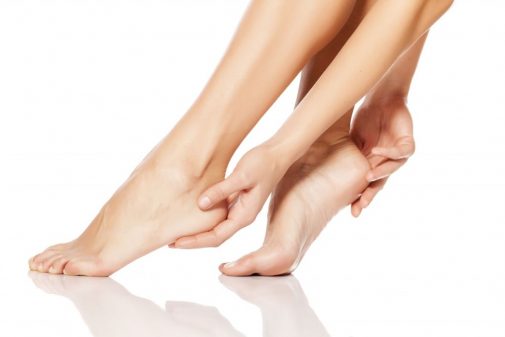Advocate Trinity Hospital issued the following announcement on May. 19.
Did you know you can tell how healthy a person is by looking at their feet? You might not realize that your foot health can be a determining factor to your overall health. But if you think about it, we spend our whole lives on our feet.
While a lot of research is dedicated to how diabetes can affect foot health, what other serious issues show symptoms in your feet?
Dr. Kellen Cohn, a podiatrist at Advocate Good Shepherd Hospital in Barrington, Ill., provides tips on what to keep an eye on when it comes to your feet:
1) Pain. Developing pain without injury can lead to chronic pain if left untreated. Plantar fasciitis and sometimes arthritis can loosen up with activity, but fractures certainly worsen it. Fractures aren’t usually something people develop without noticing, unless it’s a stress fracture. Tendonitis is another cause of pain that worsens with activity.
2) Skin discoloration. Skin discoloration is a worrisome symptom, and Dr. Cohn advises having a biopsy done when the skin displays certain characteristics that includes a growing lesion or one that bleeds easily, discolorations that are asymmetrical, have notched or irregular borders, are not uniform in color, or are greater than five millimeters in diameter.
3) Numbness. Numbness in the feet and legs is termed “peripheral neuropathy.” It is a dysfunction of the sensory nerves of the feet and legs. It is usually progressive, beginning at the toes where the nerves are most fragile. The underlying cause of neuropathy is what matters. Common causes include: Diabetes, alcoholism, pinched nerves, medications, thyroid dysfunction, vitamin deficiencies or exposure to radiation and chemotherapy.
4) Swelling. Swelling, or edema, in the feet and legs is something that should never be overlooked. If caught early, it may be treatable. It is usually a problem stemming from insufficient veins or lymphatic ducts. Elevation, compression stockings, water pills, decreased salt intake and a massage can help–especially in early stages. Swelling may also be early evidence of kidney or liver disease.
5) Cold feet. Cold feet is a symptom of arterial disease. Those inflicted with arterial disease are prone to injury, and healing is greatly delayed. Smoking is a big risk factor, and in smokers, it is not a matter of if but when arterial disease becomes evident. Raynaud’s disease presents itself through toes or fingers turning white, blue or red. It is an intolerance to cold temperatures for which patients must be aware of when exposed to cold weather/water. Raynaud’s phenomenon is sometimes associated with more serious autoimmune diseases such as scleroderma.
6) Itchy feet. Itchy feet is typically diagnosed as tinea pedis, also known as athlete’s foot, which is a fungal infection of the skin on the feet. However, if the itch is not responsive to antifungal treatment, other diagnoses include dermatitis or hyperhidrosis.
7) Gait disturbances. Sometimes overlooked, Parkinson’s can create symptoms in the feet. Gait disturbances can be subtle but very important to getting prompt treatment for the underlying pathology.
8) Foot structure. Flattening of the feet overtime can occur normally, but is also the first sign of adult acquired flatfoot. This pathological process occurs in four stages. Stage one and two are a dysfunction of the posterior tibial muscle which is treatable, while stages three and four incurs permanent, rigid, painful arthritic deformity necessitating more invasive treatment.
In addition to flat feet, it is important to pay attention to your toes. Changes in shape or direction may be a symptom of underlying diseases such as rheumatoid arthritis, scleroderma or psoriasis.
It is very important to take care of your feet. “One piece of advice I give to a lot of patients in order to maintain foot health is stretching. Of the many biomechanical problems I address, equinus, or a tight Achilles cord, is the most common,” says Dr. Cohn.
“In fact, most people have inadequate flexibility in their Achilles. This can exacerbate many problems including heel pain, forefoot ailments, tendonitis or shin splints. Proper Achilles stretching techniques can help resolve many of these problems.”
Original source can be found here.

Source: Advocate Trinity Hospital






 Alerts Sign-up
Alerts Sign-up